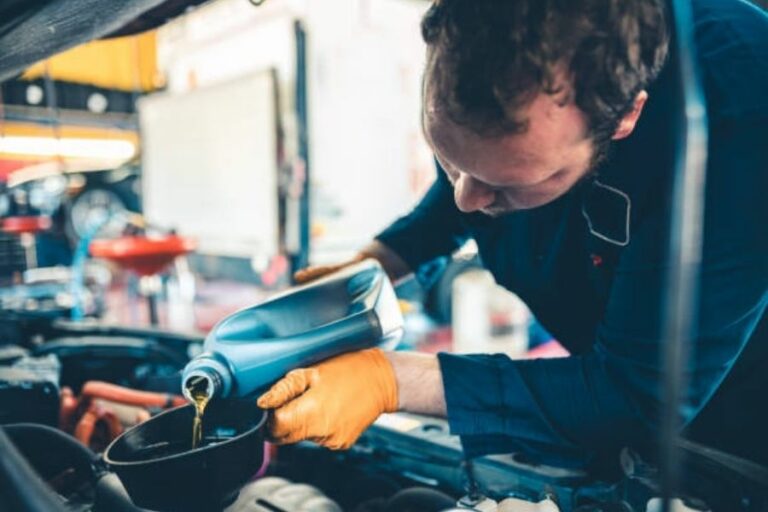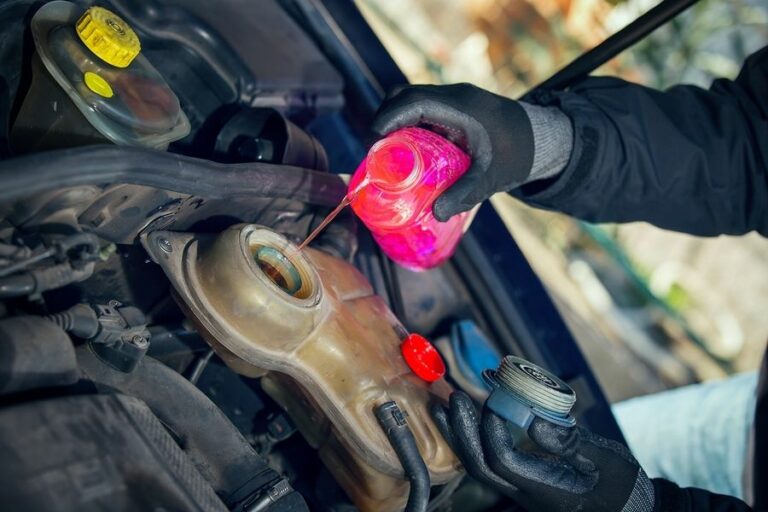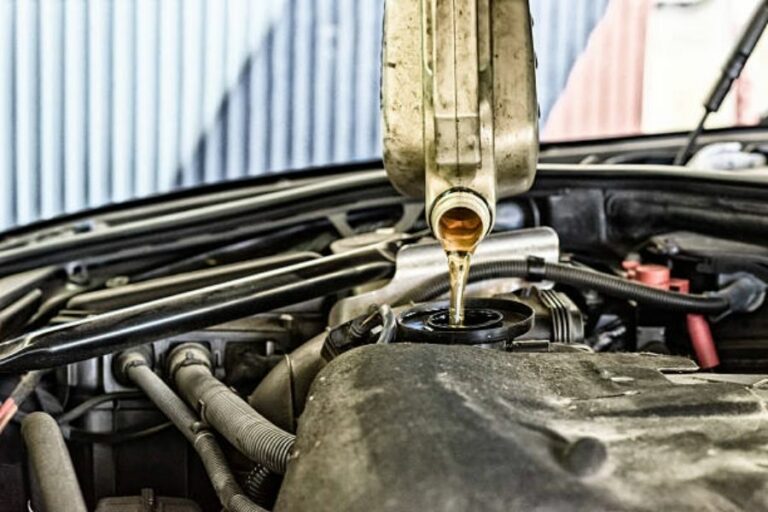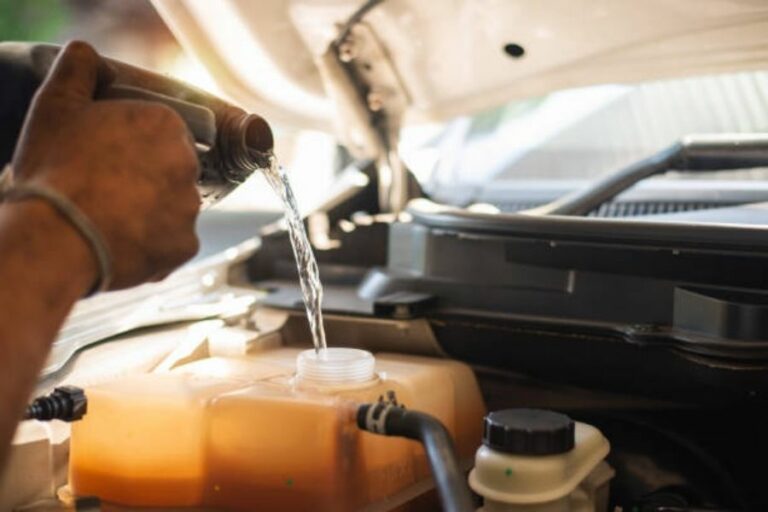What Does It Mean When Your Radiator Fluid is Brown
If you’ve ever taken a peek at your radiator fluid and seen that it’s brown, you may have been worried that something is wrong with your car.
However, in most cases, there’s no need to fret. Here’s what you should know about brown radiator fluid and what it means for your vehicle.
Radiator fluid, also known as coolant, helps to keep your engine operating at a consistent temperature. It does this by circulating through the engine and absorbing heat.
Over time, the coolant can become contaminated with rust, dirt, and other debris. What Happens If You Put Washer Fluid in the Radiator?
When this happens, it can cause the fluid to change color from its original green or orange hue to brown.
If your radiator fluid is brown, it means that it has been contaminated and needs to be replaced. Brown radiator fluid is usually the result of coolant leaking into the engine oil, which can happen if there is a crack or hole in the radiator.
This can cause serious damage to your engine, so it’s important to have it checked out by a mechanic as soon as possible. What Does Radiator Fluid Smell Like
Why is My Radiator Fluid Brown?
The radiator is a key component of the engine cooling system. It helps to regulate the temperature of the engine by circulating coolant fluid through it.
The coolant fluid picks up heat from the engine and transfers it to the air passing through the radiator fins.
If you notice that your radiator fluid is brown, it could be due to a number of reasons. One possibility is that there is rust in the system. Rust can form when water mixes with the coolant fluid.
This can happen if there is a leak in the system or if the coolant level gets low. Rust can also get into the system if you use tap water to top up the fluid instead of distilled water.
Another possibility is that something has been contaminating the coolant fluid. How to Add Radiator Fluid? This could be dirt, debris or even oil.
If there is anything other than clean fluids circulating through your radiator, it will eventually start to show up as discoloration in the fluid itself.
If you notice your radiator fluid turning brown, it’s important to have it checked out by a mechanic as soon as possible.
Brown Fluid is an indication that something isn’t right with your engine cooling system and if left unchecked, it could lead to more serious problems down the road.
How Do I Fix Brown Sludge in My Radiator?
If you’re noticing brown sludge in your radiator, it’s likely due to a buildup of rust. While this isn’t a serious problem, it can cause your radiator to function less efficiently.
To remove the sludge, you’ll need to flush your radiator. This is a relatively simple process that involves draining the radiator and refilling it with fresh water.
You may also need to add a rust remover to the mix if the sludge is particularly stubborn.
Why Does My Coolant Look Rusty?
If your coolant looks rusty, it’s likely because there’s rust in your cooling system. Rust can enter the system through the water pump, radiator, or engine block. Once it’s in the system, it can cause corrosion and clogging.
Rust is a major problem for cooling systems because it can cause a lot of damage. It can lead to engine overheating, premature failure of parts, and reduced efficiency. In some cases, rust can even cause complete engine failure.
If you notice rust in your coolant, it’s important to have the problem checked out by a mechanic as soon as possible. They will be able to flush the system and replace any parts that are damaged by the rust.
Coolant Looks Muddy
If you notice that your coolant looks muddy, it’s important to take action right away. This is usually an indication that there is something wrong with your cooling system and it needs to be fixed.
Muddy coolant can be caused by a few different things. One possibility is that there is something clogging up the radiator or other parts of the cooling system.
Another possibility is that the water pump isn’t circulating the coolant properly. Either way, it’s important to get the problem diagnosed and fixed as soon as possible.
If you let muddy coolant go for too long, it can cause serious damage to your engine. The mud can clog up vital components and cause them to fail. In extreme cases, this can even lead to engine failure.
So if you notice your coolant looking anything other than clear, make sure to take action right away!
How to Fix Brown Coolant
If your car’s coolant is brown, it’s likely that there is rust in the system. Rust can cause serious damage to your engine, so it’s important to fix the problem as soon as possible. There are a few ways to do this:
- Flush the system. This will remove all of the rust from the system and replace it with fresh coolant. To do this, you’ll need to drain the old coolant from your radiator and then add new coolant to the system.
- Add a rust inhibitor. This will help to prevent future rusting in the system. You can find these products at most auto parts stores.
- Replace rusty parts.
Coolant is Brown And Overheating
If your car’s coolant is brown and overheating, it’s time to take action. Brown coolant can indicate a number of problems, all of which can lead to engine damage if left untreated. The most common cause of brown coolant is rust.
Rust can form in the cooling system when water leaks in through cracks or holes. Once inside, the water reacts with metal surfaces, causing them to corrode.
Over time, this corrosion will reduce the effectiveness of the cooling system and may eventually cause a complete failure.
Another possible cause of brown coolant is dirty oil. Dirty oil can contaminate the coolant, turning it brown. If this is the case, you’ll need to have your oil changed as soon as possible.
Continuing to drive with dirty oil can damage your engine beyond repair. Finally, brown coolant could be an indication of a blown head gasket.
A blown head gasket will allow combustion gases to enter the cooling system, contaminating the coolant and turning it brown.
Driving With Brown Coolant
If your car’s coolant is brown, it’s time for a change. Brown coolant can indicate that your car is overdue for an oil change or that the coolant itself is old and needs to be replaced.
It’s important to keep up with regular maintenance on your car, and changing the coolant is part of that.
Here’s what you need to know about driving with brown coolant. Brown coolant can be caused by a number of things, but the most common cause is old age.
Coolant breaks down over time and starts to turn brown, just like anything else would if it were left out too long.
This isn’t necessarily a problem, but it does mean that the coolant isn’t as effective as it once was. It might not be able to protect your engine as well as it used to, so it’s best to replace it when you start seeing signs of wear and tear.
Another possible cause of brown coolant is an oil leak. If your car has been leaking oil, some of it may have mixed in with the coolant and changed its color.
This isn’t necessarily a bad thing either – oil can actually help lubricate parts of the engine – but if the leak is severe, it could lead to other problems down the line. Either way, you’ll want to get your car checked out by a mechanic if you notice any leaks.
So, should you be worried if your car’s coolant is brown? Not necessarily. If it’s just starting to turn color, you might not need to do anything right away.
But if it’s been awhile since you’ve changed your coolant or if you notice any other problems with your car, it’s best to take it in for a checkup sooner rather than later.
Light Brown Coolant
Light brown coolant is most likely due to a mixture of antifreeze and oil. This can happen when you add oil to your radiator or when your engine starts to leak oil into the cooling system.
If you see light brown coolant in your vehicle, it’s important to get it checked out by a mechanic as soon as possible.
Dirty Coolant Symptoms
If your car’s coolant is dirty, it can cause a number of problems. The most common symptom of dirty coolant is overheating.
This can happen because the dirt and debris in the coolant can clog up the radiator and prevent proper cooling. Other symptoms of dirty coolant include:
Leaks
If your car starts to develop leaks, it could be due to dirty coolant. The debris in the fluid can cause wear and tear on seals and gaskets, leading to leaks.
Rust
Dirty coolant can also cause rust to form on engine parts. This can lead to serious damage if not addressed promptly.
Poor performance
Your car may start to run poorly if the coolant is dirty. This is because the dirt and debris can clog up vital engine components, causing them to malfunction.
If you notice any of these symptoms, it’s important to take action right away. Flush out the old coolant and replace it with fresh fluid.
This will help protect your engine from further damage and keep your car running properly.
Jelly Like Substance in Coolant
If you’ve ever found a strange, jelly-like substance in your car’s coolant, you may be wondering what it is and where it came from.
This substance is actually a type of algae that can grow in water-based fluids like coolant, and is most commonly found in cars that have been sitting for long periods of time without being driven.
While this algae isn’t harmful to your car, it can clog up the cooling system and cause problems if left untreated. To get rid of the algae, simply flush out the cooling system with fresh coolant.
Why is My Coolant Rust Color
If your coolant is rust color, it’s likely because there’s iron in the water. This can happen if the water pump isn’t working properly, or if there’s a leak in the radiator. If you’re seeing rust color coolant, it’s important to take your car to a mechanic to have it checked out.
Rust color coolant can cause damage to your engine and other parts of your car, so it’s important to get it fixed as soon as possible.
Conclusion
If you notice that your radiator fluid is brown, it’s likely due to rust or sediment. Although this isn’t necessarily a cause for alarm, it’s important to have your vehicle checked by a mechanic to ensure that there isn’t any damage to your radiator. In some cases, the brown color may also be due to an issue with your coolant system.






